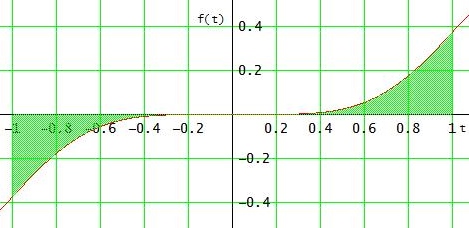Hallo HJ,
f(t) = t3 * cos(t) * ln(1+t^2)
f(-t) = (-t)^3 * cos(-t) * ln(1+(-t)^2) = - t3 * cos(t) * ln(1+t^2) = - f(t)
Für die Integrandenfunktion gilt also f(-t) = - f(t) in ℝ
→ f ist punktsymmetrisch zum Ursprung.
Deshalb ist -a∫a f(t) dt = 0 , inbesondere also auch -1∫1 f(t) dt = 0
weil sich die negativen und positiven Anteile (unter- und oberhalb der t-Achse) ausgleichen:

Gruß Wolfgang